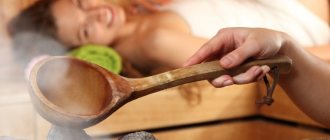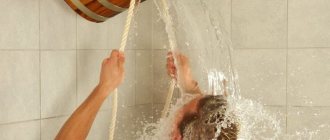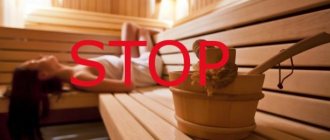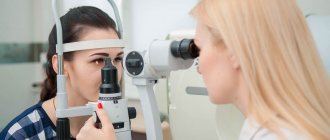Headache after a bath due to a number of different factors. Knowing their complete list, it is easy to prevent serious violations and eliminate their harmful effects. It is important to see a doctor if symptoms do not go away after several days.
How long have you had this pain syndrome?
- Several days (26%, 976)
- First day (21%, 799 Votes)
- Several months (12%, 452)
- Week (10%, 376)
- Several weeks (10%, 358)
- About a month (8%, 312)
- Chronic form (6%, 236)
- About a year (6%, 210)
Total voters: 3 720
Loading …
Use search Are you having a problem? Enter “Symptom” or “Name of the disease” into the form, press Enter and you will find out all the treatment for this problem or disease.
Why does it hurt
Much to the regret of lovers of a real Russian holiday, headaches and nausea after visiting the steam room are a common occurrence.
The main reason for the malaise is the unusual and heavy load on the entire body. The human cardiovascular system does not always adequately respond to sudden changes in external temperature. The body as a whole is experiencing unexpected stress. Chronic illnesses may worsen and symptoms of new problems may appear.
After a bath, pain in the head occurs due to a number of external factors.
- Insufficient oxygen. Many people, while in the steam room, pay attention to the unbearable stuffiness, but most attribute this to the high temperature.
- Carbon monoxide poisoning. Poor ventilation of the bathhouse and the presence of a heating stove are an ideal combination for the accumulation of substances harmful to the body. You can get a burn in the bathhouse even after 5 minutes of stay. Symptoms of carbon monoxide poisoning: headache, nausea, weakness in the limbs and suffocation.
- Incorrect posture. It is important to carry out bathing procedures while lying down; hot air is distributed unevenly in the steam room.
- Heatstroke. Beginners should not steam for long. High temperature and moist steam will often cause overheating.
- Alcohol abuse. Strong drinks overload the body, which is already under severe stress in the sauna.
- Vascular reaction. High temperature is a big burden for all human organs and systems. The walls of blood vessels are especially susceptible to this factor. A long stay in the bathhouse leads to increased blood pressure and a headache.
- Physical exercise. Visiting a steam room after the gym, a long run, or solving many everyday problems can have a bad effect on a person.
- Allergic reaction. The body's sensitivity to various odors also causes headaches. We are talking about brooms, medicinal herbs and essential oils used in the steam room.
Tips for visiting the bathhouse
For bath procedures to be beneficial, you need to follow simple tips :
- Maintaining moderation . Sauna steam is beneficial, but only if a person enjoys it no more than twice a week;
- to brew herbal tea in the waiting room in advance . It will perfectly replenish the fluid deficiency after a bath;
- Do not take a steam bath if you feel unwell . Some people mistake steam for a universal healing remedy that will quickly relieve ailments or speed up recovery from a cold. In fact, when visiting a bathhouse, almost all body processes are accelerated, from blood flow to metabolism. This is only useful in a healthy state. When a person is sick or exhausted after a day of work, such shocks will only harm the body;
- Gradually warm up the body . Starting to steam right away is a bad idea. Let the body get used to the new conditions. First you need to sit on the bottom shelf, where the heat is less.
What causes pain in the morning
Outwardly healthy people may experience painful illness after a relaxing stay in a steam room. This happens due to the heavy load on the body. An irrational approach to the process can result in headaches in the morning and cause the manifestation of various diseases.
The described ailments are more often encountered by people prone to bad habits. Those who are prone to cardiovascular diseases are at risk. Any health problems, especially chronic ones, begin to worsen in the bathhouse.
There are a number of diseases for which visiting a bathhouse is prohibited or undesirable:
- Kidney diseases;
- Stomach and duodenal ulcers;
- Migraine;
- Epilepsy;
- Inflammatory processes of different localization;
- Neoplasms;
- Gallstones.
First aid for heatstroke
If your health worsens, it is important to quickly eliminate the symptoms and stabilize the condition. Excessive fuss or friendly ridicule works against the victim, worsening his well-being every minute.
First of all, you need to leave the steam room and arrange a place to relax in the dressing room. It is best to lie down with your head elevated.
Important! If the patient’s condition is critical, a child, an elderly person or a pregnant woman is overheated, then it is necessary to call an ambulance. After the call, they continue to carry out basic measures to stabilize the condition.
You can additionally cover your head with a cool, damp towel or apply a compress to your forehead. Next, it is important to ensure a constant flow of fresh, cool air and provide plenty of clean water to drink.
Fainting in a bath or sauna
Fainting in a bath can occur due to insufficient enrichment of brain cells with oxygen. Fainting can occur not only in the steam room, but also after going to the dressing room. You can feel an approaching fainting in the bathhouse and avoid possible consequences in the form of injuries from a fall by following the characteristic symptoms:
- pale skin;
- weakness;
- severe dizziness;
- black spots before the eyes, blurred vision;
- nausea.
What to do if you have pain
If you cannot avoid the problem, you need to try to eliminate it. First, you can take a painkiller: Nurofen, Tempalgin, Analgin.
In addition to tablets, herbal infusions based on St. John's wort, lemon balm or elderberry will help cope with pain.
Sometimes it’s enough to go out into the fresh air, lie down in silence, and drink cool water. If headaches appear the next day, rest, drinking plenty of fluids and painkillers will help. You need to measure your blood pressure level.
Factors leading to the appearance of the disease
The reasons for chills may vary. The most common of them are the following:
- Chills are caused by significant and prolonged hypothermia.
- The disease developed due to a cold (ARVI).
- An infection has entered the human body.
- Chills can occur with severe fatigue.
- Various types of stress can cause chills.
- The pressure in the arteries has changed.
- Possible exposure to various endocrine disorders.
Which doctor should I contact?
Often, after physical exertion or mental stress, people feel worse. The nature of the pain can be varied. Compressive, pressing, throbbing pain in one side of the head is possible.
Pain during exercise is often functional in nature. They can occur for many reasons:
- Changes in temperature and atmospheric pressure;
- Stressful state during physical activity;
- Heat and stuffiness in the room;
- Dehydration is often the cause of headaches;
- Eat a large meal before training;
- Overweight people often suffer from hypoxia during exercise.
The likelihood of illness is higher in people with specialties: programmer, accountant, driver, who spend many hours at the computer or constantly strain the muscles of the eyes and neck.
Persistent cephalgia, which occurs regularly, requires mandatory consultation with a doctor in order to exclude serious pathology and prescribe the correct treatment in a timely manner.
The initial appointment should be made by a therapist. He will conduct a general examination, measure blood pressure, write out directions for tests and refer you to specialists.
If you have unpleasant sensations in the head and neck area, it is good to have a home blood pressure monitor, with which you can track pressure surges in different life situations. A rise in blood pressure after physical activity can often be the cause of pain.
The doctor gives a referral to an otolaryngologist to rule out chronic otitis media, sinusitis or inflammation of the maxillary sinuses (sinusitis).
The doctor can give a referral to an ophthalmologist to identify changes in the fundus and possible vision defects.
Most of the causes of discomfort in the head are associated with neurological symptoms, so diseases accompanied by head pain syndrome are treated by a neurologist.
How to avoid overheating
When visiting a steam room, it is important to follow some rules that will help avoid heat stroke or even loss of consciousness.
Monitor the temperature
The temperature in the steam room largely depends on the level of humidity. In a typical Russian bathhouse, the temperature most often stops at 70–80 degrees.
However, the humidity in the room is quite high (up to 90%), which is formed due to watering hot stones. The higher the humidity level, the more difficult it is for the body to cope with stress.
With a normal ratio of heat (60 degrees) and humidity (60–70%), all internal organs will warm up evenly, the pores will open to remove toxins. To monitor the readings, you need to install a bath thermometer.
What tests are usually prescribed?
At an appointment with a neurologist, a physical examination of the patient is performed: basic neurological reflexes are checked and the neck muscles are examined.
The doctor writes out a referral for tests: general blood test, biochemical blood test, blood sugar test.
A general blood test with an increase in ESR or an increased content of leukocytes indicates inflammation in the body.
Blood biochemistry may indicate a deficiency of one of the vital elements, which leads to discomfort in the head area.
Low blood glucose levels are often accompanied by cephalgia, dizziness and weakness.
The doctor may write a referral for additional tests:
- The gas composition of arterial blood can reveal cerebral hypoxia.
- A blood test for hormones determines various abnormalities in the functioning of the hypothalamus.
A neurologist can give a referral to one or more diagnostic methods:
- Magnetic resonance imaging (MRI) - excludes the presence of various neoplasms (tumors and cysts), aneurysms. The photographs clearly show post-traumatic defects, neurodegenerative abnormalities, and changes in blood vessels affected by atherosclerosis.
- Computed tomography (CT) is the most informative method for studying the brain. It gives a clear idea of pathological changes in the skull and brain, pathology of bone tissue, blood vessels and brain structures. Provides information about the consequences of traumatic brain injuries. The disadvantage of this method is the significant radiation dose during the study.
- Electroencephalography gives an idea of the presence of pathological changes in blood vessels and impaired cerebral circulation.
- Doppler ultrasound (ultrasound of the vessels of the head and neck) - shows the presence of atherosclerotic plaques in the arteries; narrowing and tortuosity of the arteries, leading to brain hypoxia; peripheral vascular resistance.
- Rheoencephalography (REG) - gives an idea of the tone and blood flow of blood vessels. Using REG, the following are diagnosed: hypertension, atherosclerosis, vegetative-vascular dystonia.
- MRI of the cervical spine - the presence of cervical osteochondrosis can cause pain in the head and neck, which intensifies when turning the head.
- Rheovasography of cerebral vessels (RVG) - shows the quality of blood flow through the great vessels, evaluates collateral circulation.
- Radiography will be less known. In the image you can only see the bone structures of the skull, soft tissues are not visible.
There is no need to panic when scheduling such a serious examination. The doctor excludes rare severe pathologies and looks for the causes of the pain process.
Based on the studies, if no serious organic lesions are found, the cause of the disease is usually diagnosed. It develops as a result of: vascular spasms, cerebral hypoxia, hypertonicity of cerebral vessels, hormonal imbalances, vegetative-vascular dystonia or osteochondrosis, provoked by physical or psycho-emotional stress.
My throat hurts: can I go to the bathhouse?
It is mistakenly believed that a bath will help quickly get rid of cold symptoms, including a sore throat. In fact, bath procedures can only aggravate the situation .
For uncomplicated colds without fever and at the initial stage, a bath will really be beneficial. It is especially useful to breathe in the vapors of essential oils and various medicinal herbs. It turns out something like inhalation that helps remove phlegm.
With a sore throat, the leading symptom is a sore throat. In this case, going to the bathhouse will worsen the illness. The infection process will gain even more strength due to the increased temperature. As a result, instead of treatment, the lover of steam will end up with purulent plugs, and the area of the tonsils will become more intensively covered with plaque.
If a person does not know what exactly caused the sore throat, then it is better to postpone visiting the bathhouse until he recovers. In addition, it is more beneficial as a preventative measure.
But still, bath procedures activate all processes in the body, including the formation of leukocytes. It is these cells that destroy viruses entering from the external environment.
Safe medications and pills
When planning a visit to the doctor, the patient should be prepared to answer questions about how often pain occurs and what its intensity is. This will help the doctor develop the correct treatment tactics.
Groups of drugs effective for episodic attacks of pain
Medicines for the treatment of pathology are non-steroidal anti-inflammatory drugs (NSAIDs). They have an analgesic effect, relieve inflammation, and eliminate swelling.
Often prescribed:
- Ibuprofen-400 mg per day;
- Ketoprofen-100 mg/s;
- Naproxen-500 mg/s;
- Meloxicam-7.5-15 mg/s;
- Celecoxib-200 mg/s.
Most NSAIDs have a negative side effect: with long-term use, they negatively affect the organs of the gastrointestinal tract, including the development of drug-induced gastritis.
Medicines Meloxicam and Celecoxib are new generation drugs that do not have a negative effect on the gastrointestinal tract. The disadvantages of using these drugs include the relatively high price.
Analgesics are often used at home to relieve an attack. They do not treat the disease, but only relieve pain. Drugs in this group are suitable for stopping episodic attacks, but their systematic use leads to the occurrence of abuse syndrome.
During an attack of pain, you can take Paracetamol-100 mg, Citramon, Analgin-500 mg or Mig 200-400 mg.
If the examination revealed the appearance of cephalgia after exercise as a result of increased blood pressure, the doctor will prescribe medications prescribed at an early stage of the development of hypertension. These include: vasodilators, ACE inhibitors, diuretics, calcium channel blockers.
Self-prescribing antihypertensive drugs is unacceptable. Self-medication leads to serious consequences.
For muscle tension, drugs from the group of muscle relaxants are used as part of complex treatment. They relax the spasmodic muscles of the head and neck, relieving pain of a spastic nature, and help restore blood flow.
Often prescribed:
- Mydocalm-150-450 mg per day;
- Sirdalud (Tizanidine) - 4 mg/s;
- Baclofen-15 mg/s.
Nootropic drugs are often prescribed as part of complex treatment: Phenibut, Nootropil, Glycine. Nootropics have an activating effect on brain function and increase its resistance to damaging factors. The drugs improve cerebral circulation and eliminate the consequences of traumatic brain injuries.
Sedatives in combination with basic drugs lead to muscle relaxation and decreased vascular tone. Taking tranquilizers helps relieve pain, but this type of medication quickly causes drug dependence with withdrawal symptoms.
Sedatives that are not addictive: Afobazol, Atarax; alcohol tinctures of valerian, motherwort, Maryina root.
For severe attacks, a combination of drugs is used: Sirdalud 2 mg + Aspirin 500 mg or Analgin 250 mg + sedative.
The use of vitamin B complexes has proven itself. Vitamins B1, B6, B12 have a beneficial effect on the central nervous system and restore the structure of nerve tissue. Vitamin complexes are often prescribed: Neuromultivit, Milgamma, Neurovitan.
If attacks of pain recur more than 10 times a month, a course of treatment with Ibuprofen at a dose of 400 mg per day for 2-3 weeks and treatment with muscle relaxants is prescribed for 2-4 weeks.
There is no single scheme for pain relief. Depending on the cause, each patient needs an individual selection of drugs.
Treatment of chronic disease
Sometimes cephalalgia becomes chronic. The pain occurs every day, continuously, with varying degrees of intensity.
Tricyclic antidepressants are prescribed for a long course of 2-6 months. They relieve pain and help normalize the psycho-vegetative state of the nervous system.
Amitriptyline 10-100 mg/s is most often prescribed, the dose is increased gradually. The drug relieves pain well, but has many negative side effects and is addictive.
As an alternative, selective serotonin reuptake inhibitors are prescribed: Fluoxetine, Paroxetine, Sertraline. The course of treatment is at least 2 months. These drugs have less toxicity.
In addition to prescribing drug therapy, the doctor will recommend massage, a course of physiotherapy or acupuncture.
Bad habits
The bath is a great helper for improving immunity. However, do not forget that visiting a steam room has a serious impact on the functioning of the entire body. A person who is not prepared for such a load often has problems with well-being after health procedures. This is especially true for those who prefer to drink alcoholic beverages before the steam room. Such an act can lead not only to a deterioration in well-being, but also to more serious complications. Among the most dangerous is a heart attack.
In addition to drinking alcoholic beverages, many also smoke in the bathhouse. This addiction can cause severe headaches, since nicotine narrows the lumen of blood vessels. The lack of oxygen only enhances this effect.
The facts described above fully reveal the answer to the question of why many people have a headache after a bath. In fact, visiting a steam room is a kind of indicator of health. If a person does not have problems with internal organs and blood vessels, there is no reason to worry.
Preventing headaches after a bath
After reading about what can cause a headache, you may be scared or lose the desire to visit bath complexes, but it is worth remembering that if you listen to certain advice, you can fearlessly be in the steam room, resting your soul and body. Here are some useful tips to help you have a comfortable time in the steam room:
- Remember that your brain and circulatory system need oxygen, but in a stuffy room it will not be enough; breathe in fresh air and you will not experience oxygen starvation.
- Refrain from eating a couple of hours before the steam room, it will be easier for your body and it will not create additional stress.
- Calculate a comfortable time for visiting the complex, also keep in mind that it is easier for your body to cope with the load in the morning
- Is your head valuable to you? If yes, then protect it from excessive temperature with a cap.
- Remember, you shouldn’t sit in the steam room until the last minute, it’s always better to make a couple of short visits instead of a long, but single one.
- You should not force your body, forcing it to work for wear after physical activity; reschedule the bath for another time, if possible.
- Do not risk your health by drinking alcoholic beverages in the bathhouse.
Features of the clinical picture
So, if chills appear for no reason, and there is no fever or other symptoms of a cold, this does not mean that everything is fine with your health. If the patient listens more carefully to his own body, he will feel certain changes in his overall well-being. First, it is uncontrollable trembling throughout the body, then barely noticeable problems with the masticatory muscles of the facial joints, then severe chills in every part of the body.
A violation of the temperature regime is possible, but the mark on the thermometer does not increase, but decreases to a minimum value. The patient is characterized by a loss of strength, a desire to lie down and sleep, and there is no timely response to provoking environmental factors. A person feels that he is getting sick, but the body temperature does not rise. Even in such a clinical picture, it is necessary to undergo treatment, but first contact your local physician to determine the cause of the growing ailment.
Before studying the causes of severe chills without fever, it is important to understand what is happening in the body at this moment. In essence, this is a vasospasm, which was preceded by a certain provoking factor. As a result of this imbalance, the vessels narrow pathologically, and the decrease in lumen interferes with normal blood flow. This suggests that all important processes are slowing down, and the body is at risk of internal imbalance. That is why such a symptom cannot be ignored.
The occurrence of chills due to hypothermia, ARVI, infection
If the illness manifests itself, but there is no temperature, you need to understand how the body became hypothermic. Under the influence of cold, blood vessels usually decrease in diameter and blood circulation slows down. There is a sharp disruption of metabolic processes. The person feels frozen. To eliminate chills after serious cooling of the body, you need to use hot drinks (but not alcohol) and dry heat.
If severe chills appear, but there is no temperature, perhaps the person is sick with ARVI, and this is a protective reaction of his body. To eliminate chills, doctors recommend any methods that help warm the body, for example, steaming the legs in hot water. Then you need to drink hot tea with jam or honey. You can also use various infusions of herbs and berries, for example, strawberries, currants, raspberries. After this, it is recommended to go to sleep. The use of these measures increases the sweating of the body, warms it up, after which the chills disappear.
If the infection is infectious, chills may cause trembling. Along with this, nausea occurs due to the release of toxic substances by viruses. In such cases, you must immediately seek help from a medical facility, since to determine the cause of the infection, the patient must be examined and then adequate treatment must be prescribed.











